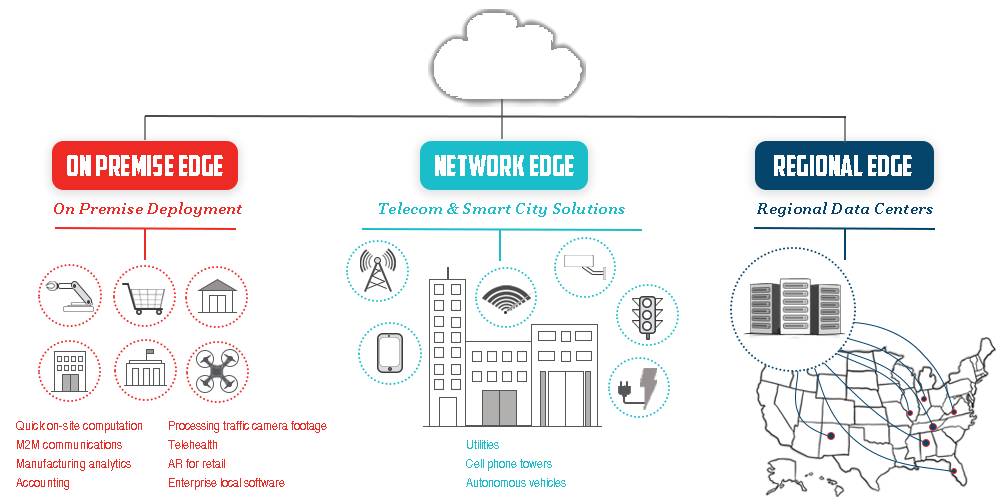Blog
Blog
Edge Data Centers: Explaining the different types
SEPTEMBER 7, 2021
 |
by Michael Ruhe, Product Manager Engineered Solutions |
There is a shift afoot in how your connectivity needs are being met by the network that serves you - can you feel it? Are you aware of it?
Depending on your specific needs, the migration of data processing from geographically distant hyperscale data centers to localized edge data centers may or may not be discernable by you. But it is definitely happening, and there is no doubt that COVID-19 has accelerated the pace of this transition.
COVID-19 has kept us indoors and increased our reliance on staying cyber-connected. As a society, we have collectively resorted to online streaming services instead of going to movie theatres, ordered restaurant and grocery delivery services rather than visiting brick and mortar establishments, and participated in more online shopping and cyber gaming than ever before.
But putting the pandemic aside, the need for data storage management and processing is ever increasing. An appreciation for this need only requires a simple cursory look at the landscape around you.
Have you noticed an in uptick in camera installations and cell towers in your area? Or how about the constant pervasiveness of the IoT and drones into our daily lives and the e-mails on the subject of AI flooding our inboxes?
The need data for data management services will forever be a ramp in one direction: up.
Enter edge data centers. They are aptly named as they are smaller data centers that live on the “edge” of a larger network and are often the entry and/or exit point into the network they support.
The objective of edge computing is to enable time-sensitive data to be processed as close to the end user as possible, reducing latency issues that are common to servers in distant data centers. Understandably, data efficiency is best optimized when conducted at the location where it is generated and consumed.
Although many types of edge data centers exist, supporting varying capacities, they can be categorized into 3 main buckets:

US Map Designed by rocketpixel / Freepik
On premises or establishment-based edge data centers usually consist of micro data centers with single server racks, deployed on the same premise as the user. This type of data center is commonly located in large enterprises, such as financial institutions, manufacturing, retail, healthcare providers, and local municipalities. Edge data centers on these premises may support the following:
- Quick on-site computation
- Machine-to-machine (M2M) communications
- Manufacturing analytics
- Online banking
- Processing traffic camera footage
- Telehealth connectivity
- Retail transactions
Historically, these have been in existence and are located on the enterprise’s existing real estate that may farm out less time-sensitive or laborious number crunching activities to external cloud services. The on-premises transactions frequently involve end user exchange and therefore require immediate response time. They also offer the best security.
Far edge or network edge data centers are small, containerized data center solutions commonly found at the base of a cell tower or some other suitable location. They are often enlisted to support cell phone towers, smart grid/smart city applications, and are likely to be found along highways in the future for autonomous vehicles.
The availability of this data handling load will take care of cell phone traffic and localized gaming apps and leave their larger connected networks to handle the brunt of high data computations.
Regional data centers are the largest type of edge data centers. They are smaller colocation hosts in non-major cities of the Tier II and/or Tier III levels, such as Birmingham, Chattanooga, Asheville, Tampa, Indianapolis, St. Louis, and Albuquerque.
Regional data centers have similar applications as on premise but serve as an aggregation point hosting hundreds of different types of customers while still offering a lower latency figure than their larger counter parts.
Read more as we dive deeper into the true pulse of the edge data center market... Does edge go beyond the buzz?
Stay up-to-date on industry trends & insights
Be the first notified of new blog posts
By submitting this contact form, you agree that a representative(s) of Mitsubishi Electric Power Products, Inc. (MEPPI) may contact you using the information you provided. In accordance with our Privacy Policy, we will never share or sell your personal data.